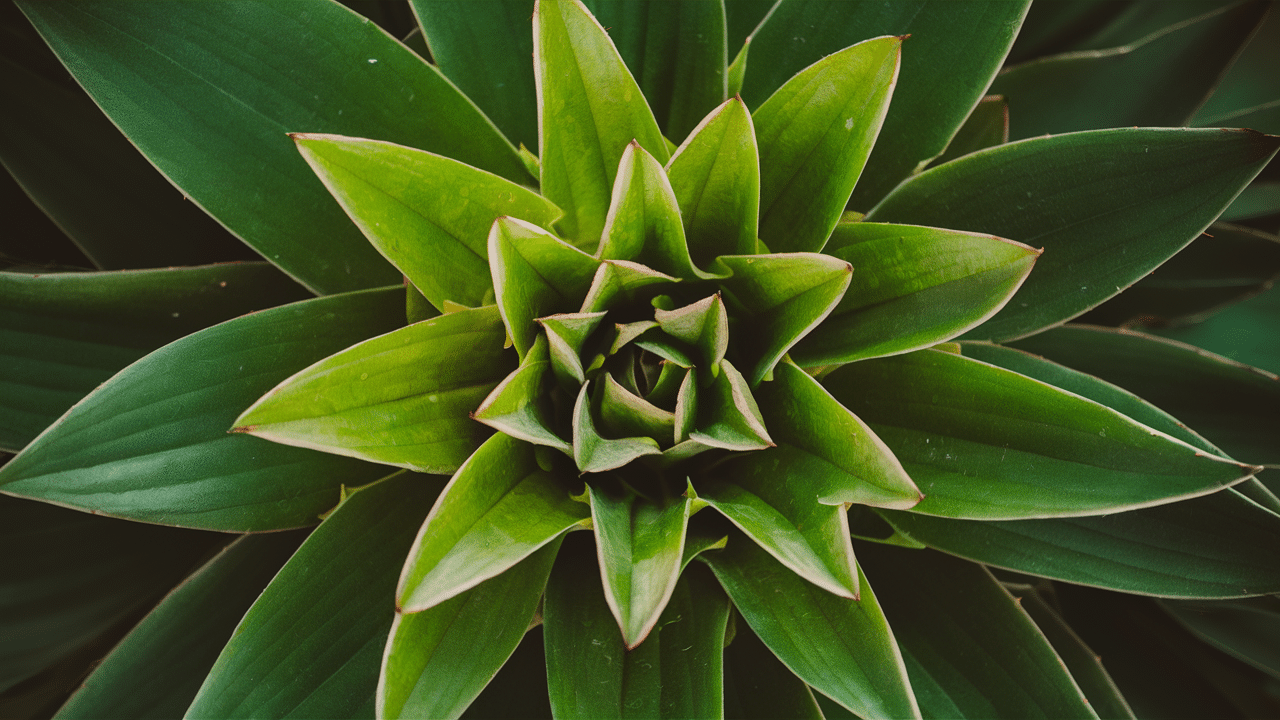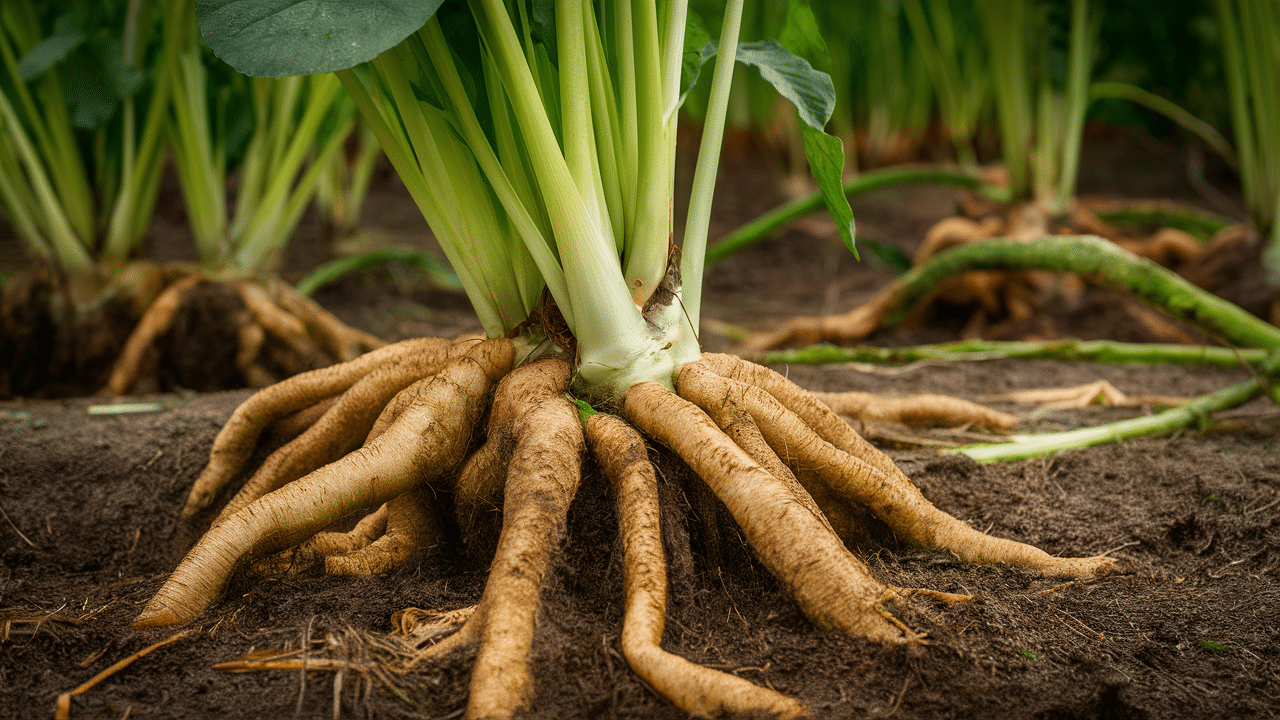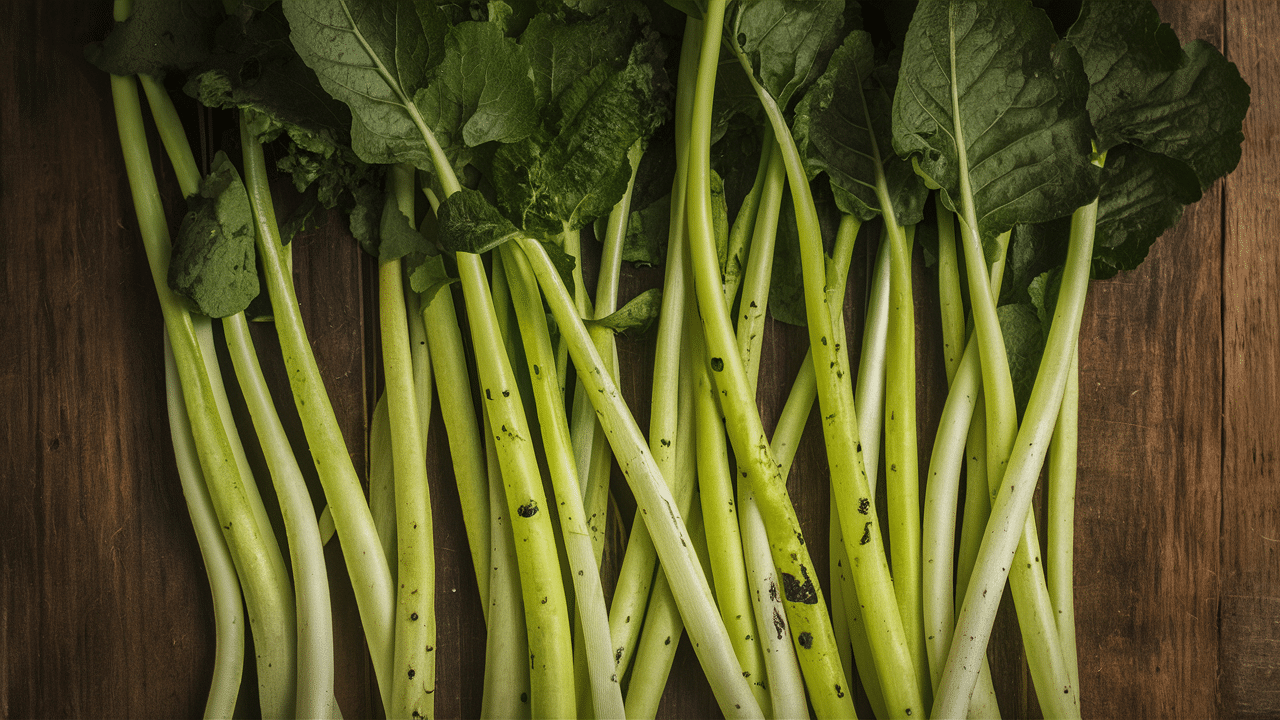Ever looked at your droopy plant and wondered if you’re loving it too much with water? You’re not alone. In this article, I’ll show you exactly how to spot the signs of overwatering and save your plant before it’s too late.
As a plant enthusiast who’s killed more plants than I’d like to admit, I’ve learned the hard way what works and what doesn’t. The good news? Most overwatered plants can be saved if you catch the problem early.
By the time you finish reading, you’ll know:
- How to quickly identify an overwatered plant
- Simple steps to fix the problem
- Ways to prevent overwatering in the future
No fancy equipment needed. No complicated techniques. Just straightforward advice that works for any indoor or outdoor plant.
Let’s rescue those waterlogged roots together!
What Happens When You Overwater a Plant?

Plants need water to survive, but too much of a good thing can kill them. When you pour too much water into your plant’s pot, you’re actually starting a chain reaction that harms it from the roots up.
The Root Problem
Think of plant roots as needing to breathe. That’s right—roots need oxygen!
When you overwater, the soil becomes completely soaked. All the tiny air pockets in the soil fill with water instead of air. Your plant’s roots literally begin to suffocate.
I’ve seen this happen countless times. The roots can’t function without oxygen. They stop working properly and eventually start to rot.
The Oxygen Struggle
Here’s what happens underground:
- Healthy soil has a mix of water and air pockets
- Overwatered soil has mainly water-filled spaces
- Roots need both water AND oxygen to function
- Without oxygen, roots stop taking up nutrients
This is why your plant looks sad even though you’re watering it a lot.
The Disease Cycle
Wet, airless conditions are perfect for fungus and bacteria. It’s like creating a perfect storm for root rot.
When roots begin to decay, they turn brown or black. They feel mushy instead of firm. The rot can spread quickly throughout the entire root system.
Once fungal disease takes hold, your plant faces an uphill battle.
The worst part? This all happens below the soil where you can’t see it—until your plant starts showing symptoms above ground.
Why Is Overwatering So Easy to Do?
Even the best plant parents make this mistake. Overwatering happens to all of us, and there are good reasons why it’s such a common problem.
Well-meaning Plant Care Gone Wrong
I’ve killed plenty of plants with kindness. It feels good to nurture your plants, and watering is the most basic way to care for them.
When you love your plants, you want to give them what they need. The problem is, most houseplants need less water than we think they do.
Sometimes I catch myself checking on my plants and automatically reaching for the watering can—even when they don’t need it. It’s almost like a habit or ritual that makes me feel like a responsible plant owner.
Misreading Wilting as a Need for Water
Here’s the tricky part: a wilting plant doesn’t always need water.
Plants wilt for many reasons:
- Too little water (droopy from thirst)
- Too much water (droopy from root stress)
- Temperature stress
- Transplant shock
- Pest problems
When you see your plant drooping, your first instinct is to water it. But if the plant is already overwatered, adding more water makes the problem worse.
Common Misconceptions About Moisture Needs
Most houseplants prefer to dry out between waterings. This surprises many people.
I used to think that keeping soil consistently moist was ideal for all plants. It’s not! Different plants have wildly different water needs.
Plants from arid regions like cacti and succulents need long dry periods. Even tropical plants often grow in well-draining environments and don’t like “wet feet.”
The truth is, plants are generally better at handling too little water than too much. A dry plant can bounce back quickly once watered, but an overwatered plant might have already suffered root damage that takes weeks to recover from—if it can recover at all.
Telltale Signs of Overwatered Plants
Yellowing Leaves That Feel Soft

When leaves turn yellow from the bottom up, your plant is sending an SOS. The lower, older leaves are usually the first to show signs of trouble.
These yellowing leaves feel different from underwatered ones. They’re soft and limp—almost mushy when you touch them. If you gently squeeze the leaf, it might feel squishy rather than papery.
I’ve noticed that overwatered leaves often keep their moisture even as they yellow. They don’t crisp up and dry out like leaves that turned yellow from too little water.
Wilting — Even Though the Soil is Wet

This confusing symptom trips up many plant owners. Your plant looks thirsty, but the soil is clearly wet!
Here’s a simple test I use: stick your finger about an inch into the soil. If it feels soggy but your plant is droopy, you’re dealing with overwatering.
With underwatered plants, the soil feels bone dry and the leaves might curl or become crispy. With overwatered plants, the soil feels wet and the leaves look sad and heavy despite all that moisture.
Root Rot (Slimy, Brown Roots)

Root rot is like gangrene for plants. Once it starts, it can quickly spread through the entire root system.
To check your plant’s roots:
- Gently remove the plant from its pot
- Brush away some soil to expose the roots
- Healthy roots are firm and white or tan
- Rotting roots are brown or black and feel mushy
I know it feels scary to unpot your struggling plant, but it’s the only way to truly assess root health. Be gentle—those damaged roots are fragile!
Mushy Stems or Black Spots

When stem tissue turns soft or dark, it’s a serious warning sign. Fungal infections often cause dark spots or patches, especially near the soil line.
If you notice these symptoms:
- Stop watering immediately
- Improve air circulation around your plant
- Trim away affected stems using clean, sharp scissors
- Cut back to healthy tissue (look for firm, green stems)
Always disinfect your scissors before and after cutting diseased plant material to avoid spreading the problem.
Mold or Fungus on Soil Surface

White fuzzy growth, green spots, or a sour smell coming from the soil are all signs of too much moisture.
When soil stays wet too long in a warm, still environment, it becomes the perfect breeding ground for mold and fungus. This isn’t just unsightly, it’s a sign your plant’s roots might be suffering below the surface.
Poor air circulation makes this problem worse. If you see mold starting to form, it’s time to address your watering habits and possibly repot your plant with fresh, dry soil.
How Do I Fix an Overwatered Plant?
Take a deep breath. You’ve caught the problem, and now you can fix it. Many overwatered plants can be saved with the right care.
The solution depends on how bad the damage is. I’ve saved plants that were on death’s door by following these steps:
For Mild Overwatering
If you just see some yellow leaves but the stems are firm and most of the plant looks okay:
- Stop watering immediately
- Move your plant to a brighter spot with good airflow
- Remove the yellow leaves with clean scissors
- Let the soil dry out completely before watering again
Your plant needs time to recover. Don’t water until the top 1-2 inches of soil feel dry when you stick your finger in.
For Serious Overwatering
If you see multiple symptoms like root rot, moldy soil, or mushy stems:
- Time for repotting
- Gather your supplies:
- Clean pot with drainage holes
- Fresh, well-draining soil
- Clean, sharp scissors
- Paper towels
- Gently remove the plant from its pot
- Wash away old soil from the roots
- Trim away any rotting roots with clean scissors (they’ll be brown, black, or mushy)
- Cut back affected stems to healthy tissue
- Let the plant air-dry for a few hours
- Repot in fresh, dry soil
- Wait 1-2 days before watering lightly
When to Repot vs. When to Wait
Not sure if you need to repot?Here’s my rule of thumb:
Repot if:
- You see root rot
- The soil smells sour or rotten
- There’s mold growing on the soil surface
- The plant is severely wilting despite wet soil
Just let it dry if:
- Only a few leaves are yellowing
- The stems are still firm
- The soil is wet but not soggy
- No signs of mold or fungi
Be Patient!
Recovery takes time. Your plant might look sad for a while, but don’t give up. I’ve had plants lose almost all their leaves and still come back stronger than ever.
Look for new growth – it’s the best sign your plant is on the mend. Sometimes a plant will focus its energy on growing new roots before putting out new leaves, so don’t worry if visible progress seems slow.
Remember: It’s easier to bring a dry plant back to life than to save one that’s been drowning. In the future, wait until the top inch of soil is dry before watering again.
Should You Repot an Overwatered Plant?
Repotting can save your plant’s life—or stress it further. Knowing when to take this step makes all the difference between recovery and decline.
When Repotting Is Necessary
Not every overwatered plant needs repotting. I only repot when:
- The roots show clear signs of rot. Brown, mushy roots need to be removed, and the plant needs fresh soil.
- The soil stays soggy for more than a week. If water just won’t drain, something’s wrong with your soil mix.
- There’s a foul smell coming from the pot. This means bacteria are breaking down rotting roots.
- You see mold or fungi growing on the soil surface. These organisms thrive in constantly wet conditions.
If your plant just has a few yellow leaves but otherwise looks okay, simply letting the soil dry out might be enough.
How to Repot Without Adding Stress
Repotting is already stressful for plants, and an overwatered plant is already struggling. Here’s how I minimize additional shock:
- Choose a dry, partly cloudy day if possible. Avoid extreme heat or cold.
- Prepare everything before you start:
- Clean pot with drainage holes
- Fresh soil mix
- Clean scissors or pruning shears
- Paper towels
- A clean work area
- Be gentle with the roots. Carefully remove old soil by hand rather than roughly shaking it off.
- Let the roots air dry for a few hours after cleaning. This helps kill remaining fungi and bacteria.
- Don’t water immediately after repotting. Wait 1-2 days to give any damaged roots time to heal before introducing moisture.
Choosing the Right Pot and Soil
The right container makes a huge difference!
For pots:
- Always pick a pot with drainage holes. No exceptions!
- Don’t go too big. A pot 1-2 inches larger than the root ball is perfect.
- Consider terracotta for moisture-sensitive plants. These pots breathe and help soil dry more evenly.
For soil:
- Commercial potting mix is often too water-retentive. I add extra perlite or pumice to improve drainage.
- For most houseplants, try this mix:
- 2 parts quality potting soil
- 1 part perlite or pumice
- 1/2 part orchid bark (for airflow)
- For succulents and cacti, use even more drainage material:
- 1 part potting soil
- 1 part coarse sand
- 1 part perlite or pumice
Your plant will thank you with new growth once it has the right environment to recover in!
How Long Does It Take for a Plant to Recover?
Recovery isn’t an overnight process. After fixing an overwatering problem, you’ll need patience as your plant heals and rebuilds its root system.
How quickly your plant bounces back depends on several things:
Plant Type Matters
Some plants are simply tougher than others:
- Fast healers: Pothos, spider plants, and ZZ plants can recover in 2-4 weeks
- Moderate recovery: Philodendrons, peace lilies, and snake plants might take 4-8 weeks
- Slow recovery: Fiddle leaf figs, orchids, and most succulents can take 8-12 weeks or longer
I’ve seen a pothos bounce back from severe overwatering in just two weeks, while my fiddle leaf fig took three months to show new growth.
Damage Level
The extent of the damage makes a huge difference:
- Mild overwatering (just a few yellow leaves): 1-3 weeks
- Moderate damage (wilting, some root issues): 3-6 weeks
- Severe damage(significant root rot): 6-12 weeks—if recovery is possible
Time of Year
Plants recover faster during their natural growing season:
- Spring/Summer: Faster recovery with active growth
- Fall/Winter: Much slower recovery when many plants are dormant
Signs Your Plant Is Recovering
Look for these positive changes:
- New leaf growth, even tiny buds
- Existing leaves becoming firmer and more upright
- Brighter, more vibrant color returning to foliage
- Less yellowing on newer leaves
The first sign is often that the plant simply stops getting worse. That’s progress!
When to Accept It’s Time to Move On
Not every plant can be saved, and that’s okay. I’ve had to say goodbye to many plant friends despite my best efforts.
Consider starting over if:
- Your plant shows no improvement after 8 weeks of corrected care
- All the leaves have dropped and stems are becoming mushy
- New growth emerges but immediately turns black or dies
- You’ve tried repotting and the roots continue to rot
Sometimes the kindest thing is to take a cutting from any healthy part (if possible), compost the rest, and learn from the experience.
Remember: Even experienced plant parents lose plants sometimes. Each one teaches you something valuable for your next green friend.
How to Stop Overwatering Your Plants
Prevention is easier than cure. Once you’ve rescued an overwatered plant, you’ll want to make sure it never happens again. Here’s how I keep my plants happy without drowning them.
The Finger Test: Your Most Reliable Tool
Forget strict watering schedules. Instead, use the finger test:
- Stick your finger about 1-2 inches into the soil
- If it feels dry at that depth, water thoroughly
- If it feels damp, check again in a few days
It’s simple but effective. I do this before watering any plant, no matter what.
For tech lovers: A moisture meter works too. These affordable tools give you a more precise reading of soil moisture. Just insert the probe into the soil and check the reading.
Learn Your Plant’s Unique Rhythm
Not all plants need the same amount of water. Some of my plants need water weekly, while others can go a month between waterings.
Consider these factors:
- Plant type: Succulents and cacti need much less water than ferns and calatheas
- Pot size: Larger pots dry out more slowly
- Pot material: Terracotta dries faster than plastic
- Season: Most plants need less water in winter
- Light levels: Plants in bright light need more frequent watering
- Humidity: Dry homes mean more frequent watering
I keep a simple plant journal noting when I water each plant. After a few months, you’ll see patterns emerge.
Set Reminders, But Check Before Watering
I set reminders to check my plants, not to water them automatically.
When my reminder pops up, I:
- Check the soil moisture first
- Look at the plant for signs of thirst
- Consider recent conditions (temperature, sunlight, etc.)
- Then decide whether to water
Never water on autopilot. That’s how overwatering happens.
Good drainage prevents overwatering even when you make mistakes:
Pot Selection
- Always use pots with drainage holes
- Drill holes in decorative pots if needed
- Use pot feet to elevate containers and improve airflow
Soil Matters
- Standard potting soil often holds too much moisture
- Add perlite, pumice, or coarse sand to improve drainage
- Repot plants that seem to stay wet too long
Empty Those Trays
- Don’t let plants sit in standing water
- Empty saucers 30 minutes after watering
- Use gravel trays for humidity without wet feet
Small changes in how you water can make a huge difference in your plants’ health. Your plants will reward you with stronger growth and fewer problems!
Conclusion
Saving overwatered plants is all about recognizing the signs early and taking quick action. Remember that most plants are resilient and can recover with the right care.
Start by letting the soil dry out completely, check if repotting is necessary, and then establish better watering habits moving forward.
The key is learning your plant’s specific needs rather than following a rigid schedule. Pay attention to your plant’s signals, trust the finger test, and ensure proper drainage.
With a little patience and the right approach, those droopy leaves can transform back into the vibrant, healthy plant you know and love. Every plant rescue teaches you something valuable, making you a better plant parent in the long run. Your willingness to learn and adjust your care routine is the greatest gift you can give your green friends!













